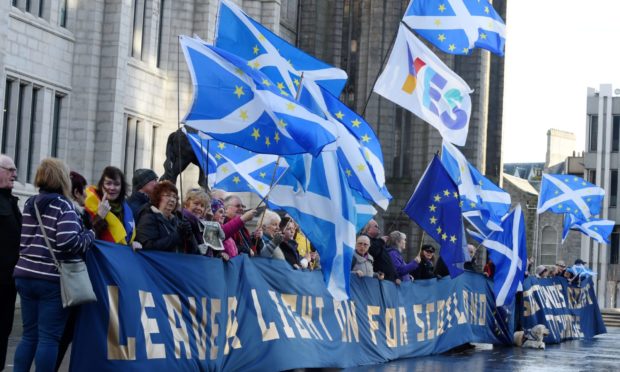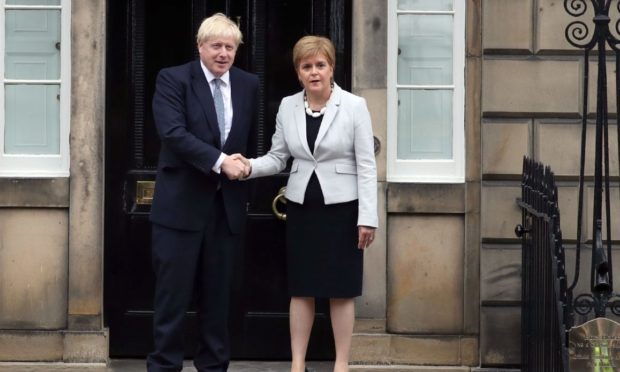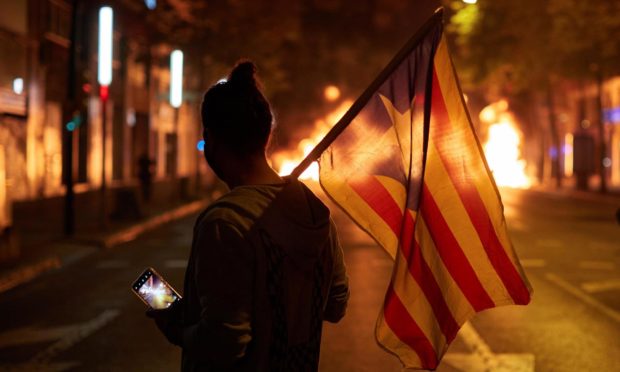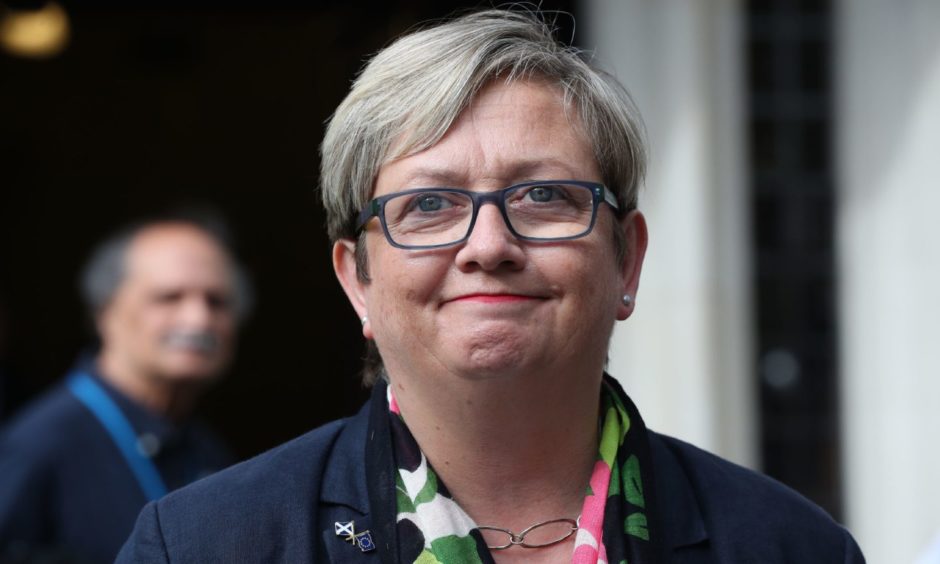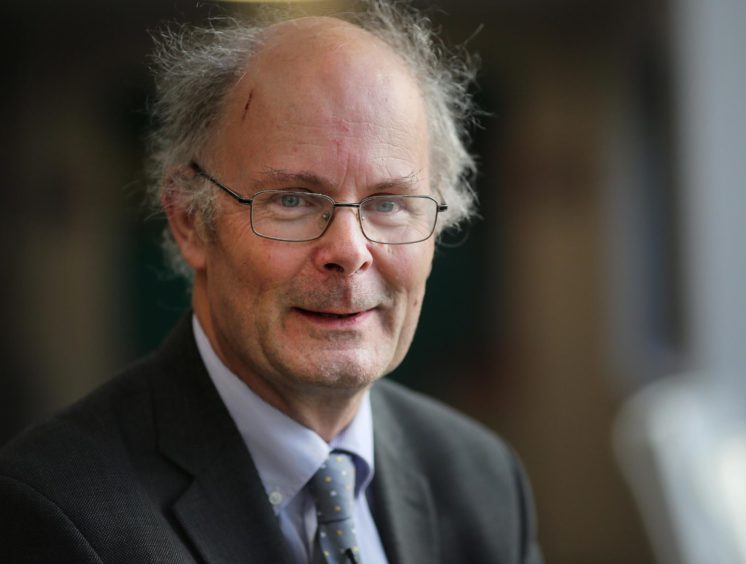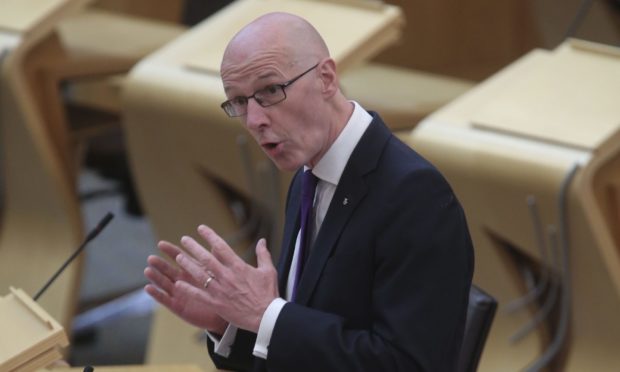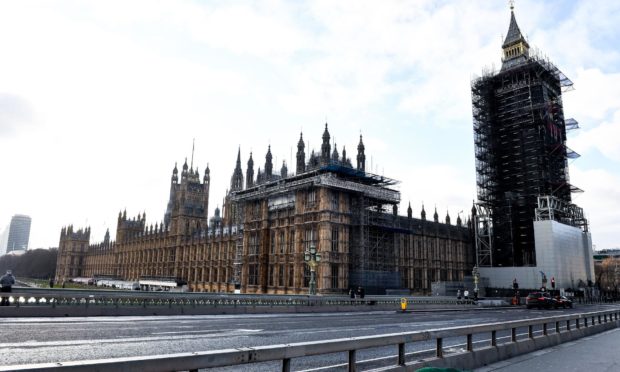There’s an image of a donkey being led by a carrot dangling from the end of a stick doing the rounds on social media.
Typically, it is shared by those of a hardline Unionist persuasion to taunt the SNP. The carrot represents Nicola Sturgeon’s yet-to-be-fulfilled promises of a second independence referendum and the donkey represents her foot soldiers.
When things are going tits up for the SNP they always dangle the "independence carrot".. and the nationalists fall for it all the time, I feel sorry for them but one day they'll back the winning horse instead of the indy donkey… 🇬🇧 pic.twitter.com/OHkakSgZ7h
— Paul (@trublu_80) October 12, 2020
Online, there is evidence the meme has touched a nerve with independence supporters who are growing increasingly impatient with the lack of progress towards indyref2 despite the SNP’s dominance of Scottish politics.
It pains me to consider not voting for them. #Independence has been my dream for a long time. But I don’t see
it happening anymore and this was my only reason for voting SNP. I feel like I’m becoming the donkey and Indy is the carrot on the stick being dangled.— Viking Alba (@viking__alba) August 7, 2020
“I do have some sympathy with why they are cheesed off by that,” said an SNP grandee, who preferred to speak anonymously. “Part of the problem is, they have been marched up to the top of the hill and down again so many times. There needs to be some meaningful action.”
Meaningful action on independence is exactly what the SNP grassroots are demanding ahead of May’s Scottish election, which the polls suggest will result in Ms Sturgeon’s party emerging as convincing victors.
But even if, as predicted, the SNP return a majority, can Ms Sturgeon deliver what her supporters want in the face of the UK Government’s consistent refusal to countenance another independence poll?
Success in May would obviously be greeted with delight by the SNP leader, but the paradox is that it creates its own pressures in terms of how she deals with Boris Johnson’s intransigence and the expectations of independence supporters.
The SNP may find itself springing an indy-related trap – set by its own success, the defiance of the UK Government and the ambitious aspirations of its followers.
Later this month the SNP will discuss these challenges at a meeting of its National Assembly, when members will consider independence referendum strategies.
The virtual gathering will be a chance for members to vent their frustration over Ms Sturgeon’s “cautious” approach and her long-held preference for a referendum held with Westminster permission via a Section 30 Order, as was done in the 2014 vote.
Is an SNP majority in the bag?
It was the thumping SNP majority achieved by Alex Salmond in the Scottish Election of 2011 that paved the way for the 2014 independence referendum. Therefore, the conventional wisdom would be that Nicola Sturgeon should achieve a similar result in May for an indyref encore.
Ailsa Henderson, professor of political science at Edinburgh University, said the opinion polls suggest Ms Sturgeon can replicate Mr Salmond’s 2011 achievement.
“On current polling, she’s on course for a majority,” said Professor Henderson. A succession of polls has put backing for independence at above 50%.
Holyrood seat projection from poll, Savanta ComRes 11 – 15 Dec (changes vs 9 Oct / vs 2016);
SNP – 71 (+5 / +8)
Conservative – 23 (-2 / – 8)
Labour – 19 (-3 / -5)
Green – 11 (nc / +5)
Lib Dem – 5 (nc / nc) pic.twitter.com/wBJ2LdIHBr— Ballot Box Scotland (@BallotBoxScot) December 17, 2020
Of course, things may change by May, particularly if Holyrood’s Salmond inquiry throws up fresh embarrassments for the Scottish Government. But any decline in SNP popularity would have to be accompanied by one of the opposition parties gaining a surge in support, which has yet to materialise.
“As well as SNP numbers to fall you would also need another party’s numbers to rise and it is hard to imagine which party we are expecting to suddenly jump 15 points,” Professor Henderson said.
Even so, the SNP itself recognises that an outright majority is a stiff challenge and there are already back-channel talks with the independence-supporting Greens to discuss manifestos.
Discussions are taking place to ensure that the SNP and Greens both make a similar commitment to a second independence referendum ahead of polling day. This is to allow them to argue that an “independence-supporting majority” – and not just a SNP outright majority – should be a mandate for indyref2.
But with expectations of SNP success so high, there is the prospect that anything short of an outright majority will be regarded as a disappointing result for Ms Sturgeon.
Eminent pollster Professor Sir John Curtice of Strathclyde University put it bluntly, saying that if the SNP fails to get its own majority then independence plans will be dealt a mortal blow.
“They’ll have to get an overall majority,” Professor Curtice said. “If they don’t get an overall majority then the game’s over because you have got to create the same precedent as in 2011.”
Why are independence supporters so frustrated?
Even if the SNP achieves a majority, there is absolutely no guarantee that the UK Government will give in to demands for a referendum. Indeed, the signs are Boris Johnson won’t.
The prime minister has held the line that the SNP should keep its “once in a generation” indyref promise and recently suggested there should not be another vote until 2055.
With Mr Johnson refusing to transfer referendum-holding powers from Westminster to Holyrood – through a Section 30 Order – activists are seeking a way around the impasse.
It has not been the wisest strategy to talk about Section 30 as the gold standard and give the impression that both nationally and internationally the only way Scottish independence can be achieved is by a referendum sanctioned by a Section 30 order.”
Senior SNP source
Nicola Sturgeon, however, has always maintained that she would like a repeat of the “gold standard” referendum held in 2014 with the co-operation of the UK Government under the Edinburgh Agreement.
Ms Sturgeon has argued that the Section 30 route – as required in the Scotland Act that created devolution – is the cleanest way of delivering a binding second referendum.
At the same time, she has argued that the SNP’s electoral record since the 2014 vote means there is an indyref2 mandate. But, so far, she has been prevented from delivering a second poll.
This has led to calls for the SNP to look seriously at alternative strategies.
“It is foolish in the extreme not to have a fall-back position,” said the SNP grandee. “I would be as delighted as anyone if Boris Johnson grants a Section 30 order, because I think by far the easiest way to resolve this matter is to do things the same as they were done in the Edinburgh Agreement of 2012. But my fear is that’s not going to happen this time.”
The source went on to argue that Ms Sturgeon’s strong preference for her indyref Plan A is causing angst for those who believe Plan B should be explored.
“It has not been the wisest strategy to talk about Section 30 as the gold standard and give the impression that both nationally and internationally the only way Scottish independence can be achieved is by a referendum sanctioned by a Section 30 order,” the SNP source said.
“It sent out the wrong message at home and abroad. We are kind of stuck with it now and because there was a referendum in 2014 it is very difficult for the SNP to depart from its policy when it comes to having another one.”
One of the strongest advocates of an alternative approach, SNP Councillor Chris McEleny, said: “If the SNP fight the Holyrood election on the proviso that they’ve fought previous elections, we are just doomed to get the same outcome, which is: ask Boris Johnson for a Section 30 order and Boris Johnson will say no. It is pretty clear we need a Plan B.”
What are the indy Plan Bs?
Among the more radical proposals being mooted by independence supporters is to turn May’s contest into a “plebiscite election”. That would mean treating the forthcoming Scottish election as a referendum in itself. Under this plan, an independence-supporting majority in May would be treated as a mandate to break up the United Kingdom.
A petition demanding this plan of attack has been set up by the Independence for Scotland Party (ISP), one of several pro-indy organisations that will stand candidates on the Holyrood regional list.
“The lack of progress has already caused a lot of frustration with independence supporters over the years,” said Colette Walker, a former SNP member who now leads the ISP.
“Boris Johnson was elected on a mandate to say he would refuse any Section 30 order so he’s never going to grant it. Why would he when the polls are saying independence is over 50%?”
“The SNP can’t just keep going into elections saying give us your vote, we will get a majority, because it is not going to deliver a referendum. That’s why there is an ISP petition to ask the SNP, Greens and other indy-supporting parties to ask for May election to be a plebiscite election.”
The reality, however, is that the ISP plan will not get off the ground. Experienced heads in the SNP believe the idea is a “non-starter”, despite being the subject of much chatter at party branch meetings and online.
There is a recognition at the top of the party that such an approach will not get Boris Johnson to the negotiating table for discussions on how to break up the UK.
Another provocative proposal that gets raised frequently is for a Catalonia-style wildcat referendum to be held without Westminster permission.
The Western Isles MSP Angus Brendan McNeil and the shadow Scottish secretary Mairi Black MP are among the prominent Nationalists urging such an approach. However, any vote held in such circumstances would likely be boycotted by many supporters of the Union, dealing a further blow to its credibility.
Furthermore, Ms Sturgeon has repeatedly said she does not favour an unlawful referendum and has one eye on the harm that a wildcat poll might have on her relationship with EU leaders, particularly those in Madrid.
But an intriguing dimension to the internal wrangling over Plan B is the possibility of an unauthorised referendum being tested by the courts.
That option has been raised by the likes of Joanna Cherry QC, the SNP MP for Edinburgh South West. Ms Cherry, who is close to Alex Salmond and has been tipped by some as a future SNP leader, is one of those who has suggested the party needs a Plan B.
Ms Cherry agrees that the referendum should be legal and constitutional, but that does not necessarily mean relying on a Section 30 Order to authorise it.
Under her scenario, the Scottish Government would bring a referendum bill to Holyrood with the backing of the Lord Advocate. Either the UK Government would challenge its legality or the Lord Advocate could proactively go to court to test its competence.
If the Scottish Government won the case a legal referendum could be held, which pro-Union voters would have more difficulty boycotting. If the Scottish Government lost, independence supporters would be hopeful that the judges make some remark about democracy being denied, which would add fuel to Nationalist fires.
Interestingly, Ms Sturgeon did not rule out this approach when she made her last major speech on Brexit and independence almost exactly a year ago, just before the coronavirus outbreak.
Addressing activists at Edinburgh’s Dynamic Earth in January last year, Ms Sturgeon left the door open for Holyrood holding its own “consultative” referendum.
But she warned that the outcome of any legal test was uncertain and “could move us forward – but equally it could set us back”.
While her remarks were welcomed by the likes of Ms Cherry, it was clear the first minister still has reservations about a strategy that would trigger a lengthy court battle.
How will indy be dealt with in the SNP manifesto?
The SNP manifesto has yet to be written. But as previously mentioned, behind-the-scenes discussions are already taking place with the Greens to agree a form of words that maximises the chances of producing a mandate for a second referendum.
Professor Sir John Curtice predicted that the SNP is likely to come up with a similar formula to previous elections, which is to link a vote for Nicola Sturgeon’s party to demanding indyref2.
As in years gone by, the section recommitting the party to independence is likely to be broad-brush in nature and, according to Professor Curtice, is highly unlikely to enter the minefield of Plan B proposals.
“The point is that it is not in the SNP’s interest to tell anybody what Plan B is,” Professor Curtice said. “If they put Plan B in their manifesto then the UK Government will say, ‘fine, your mandate was to implement plan B off you go, you can’t do plan A.’
“So the SNP simply has to say we want to hold a referendum like in 2014. That maximises the pressure on the UK Government.”
What will be the approach of the SNP’s opponents?
A UK Government source said part of the strategy would be keeping “cool and calm heads” as the constitutional sabre-rattling intensifies.
With the prime minister holding firm against indyref2 demands, Conservatives, Labour and Lib Dems will argue forcibly that Holyrood should be concentrating on dealing with the coronavirus crisis.
Their argument will be that agitating for more constitutional chaos is the last thing the country needs when a laser-like focus should be devoted to recovering from the devastating human and economic costs of the pandemic.
In the end, what the Unionist side has to do is stop thinking up wheezes and fight the intellectual argument. If they are going to turn this around, they are going to have to convince people that the Union will work for Scotland.”
Professor Sir John Curtice of Strathclyde University
The Holyrood opposition parties will be anxious to turn attention on the SNP’s domestic record, an area where even Nationalist insiders privately admit Ms Sturgeon is vulnerable.
“The domestic agenda is looking a bit tired,” said one senior SNP source. “There will be questions about domestic policy, which could be problematic for us.”
Those include long-standing concerns about the education attainment gap between the rich and poor, the catastrophic drug deaths figures, the nation’s underlying health issues and the Scottish Government’s handling of BiFab job losses and its actions in relation to the Ferguson Marine Calmac ferries fiasco.
There’s also the possibility of more embarrassing revelations emerging from the Holyrood inquiry into the Scottish Government’s handling of harassment claims against Mr Salmond being thrown into the mix.
Another theme likely to be promoted by the Conservatives is the financial help given by the Treasury during the pandemic, as part of their argument that Scotland benefits from the “broad shoulders” of the UK.
The question marks over an independent Scotland’s financial situation, currency, pensions and the prospect of a hard Anglo/Scottish border in the post-Brexit era will also be emphasised.
But at the heart of all this will be the need to make a persuasive case for the Union that resonates with the voters.
Professor Sir John Curtice said: “In the end, what the Unionist side has to do is stop thinking up wheezes and fight the intellectual argument. If they are going to turn this around, they are going to have to convince people that the Union will work for Scotland.”
What will happen in the long term?
For crystal ball gazers this is perhaps the most difficult question of all, but perhaps the most obvious point to make is that little is likely to happen in the short term.
SNP Westminster leader Ian Blackford’s hope that a referendum will take place this year looks certain to be dashed. The coronavirus has seen to that (and may even delay the May election). Nicola Sturgeon is likely to put in another request for a Section 30 order, assuming the SNP does as well as predicted in May.
If the UK Government does eventually yield to her demand, it will not be any time soon. And in that case there will be tense and, no doubt, lengthy negotiations about any referendum process.
Already there is speculation on the SNP side that in the post-Brexit era the UK Government may try to influence the franchise so that EU nationals are excluded, a move that would remove around 240,000 voters.
Such a move would be opposed by the SNP, who feel that section of the population would be sympathetic towards independence as a means of getting back into the EU.
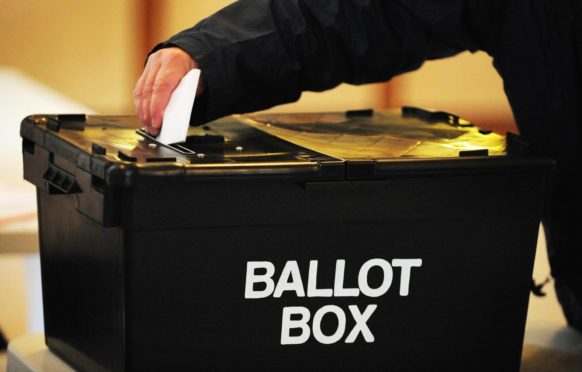
There may also be a battle over the inclusion of a third option on the ballot paper for those who favour a further strengthening of devolution short of independence. However, given the large-scale transfer of powers to Holyrood that has already taken place it is difficult to see how much further that road can be travelled.
There is also the prospect of the independence issue being kicked on to the 2024 General Election. Should the UK Government’s refusal to accept a second referendum translate into rising support for the SNP, there is the real possibility of the Nationalists holding the balance of power in a hung Westminster parliament.
“There is always a non-trivial probability that you end up with a hung parliament,” said Professor Curtice. “It is a nightmare that Westminster has to worry about – the SNP get a majority of seats in Scotland that they then use in a hung parliament to make it impossible for anybody else to govern.”
If the SNP’s indyref ambitions are still thwarted at that stage, there will be a clamour to turn the 2024 contest into a “plebiscite election” – a sequence of events that is being considered by the Plan B advocate Chris McEleny.
“If a referendum is blocked, the only way you can give people a choice over their own future in a democratic event is in at an election. You then turn an election into a referendum,” Councillor McEleny said.
Plenty of food for thought – not to mention carrots dangling from the ends of sticks – ahead of the SNP’s National Assembly meeting this month and the May Scottish election.
